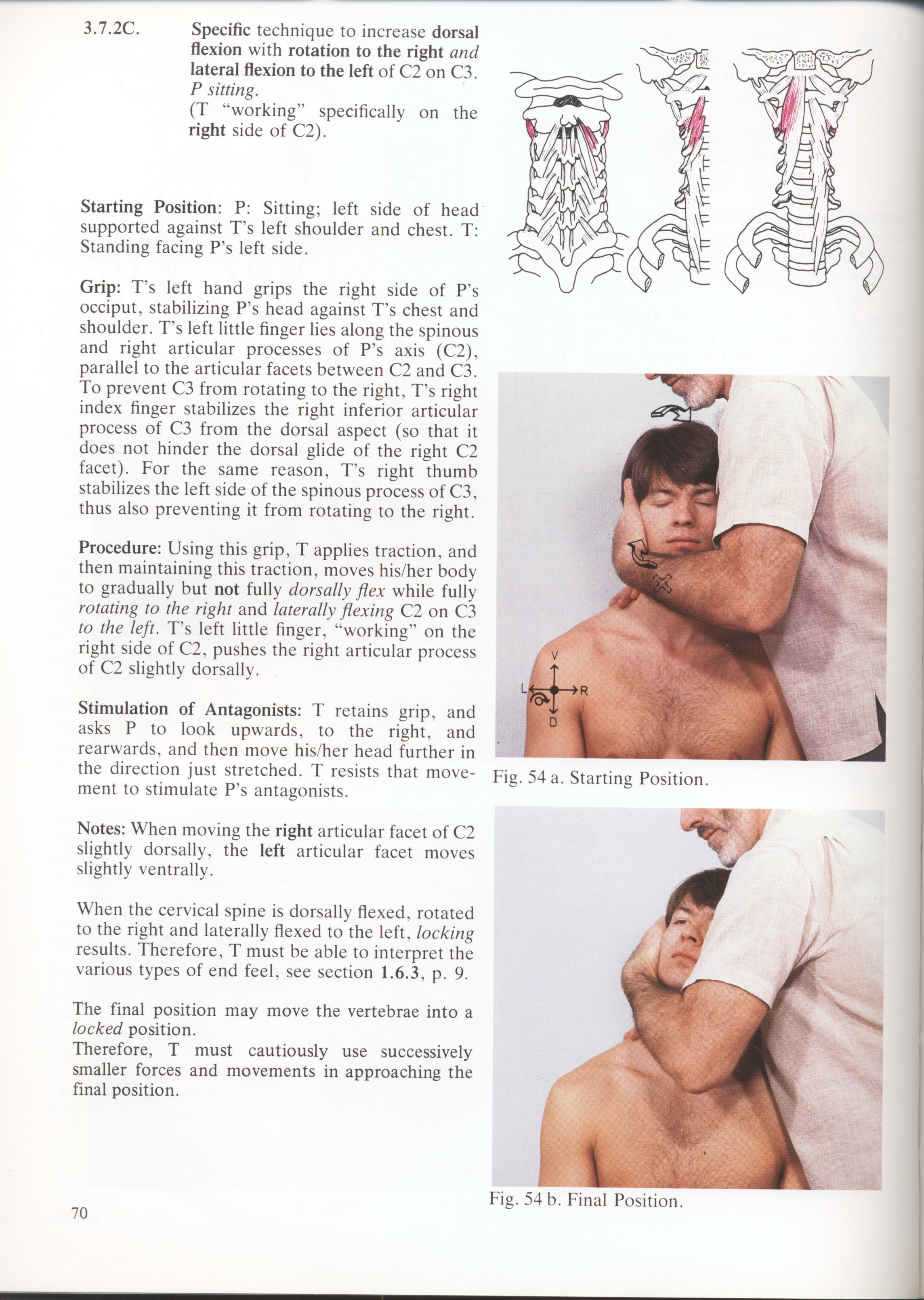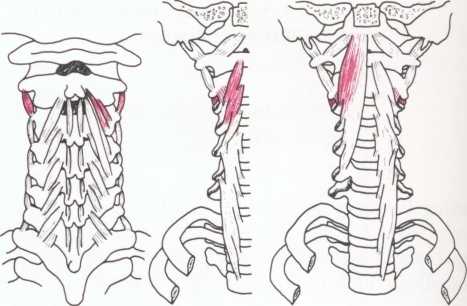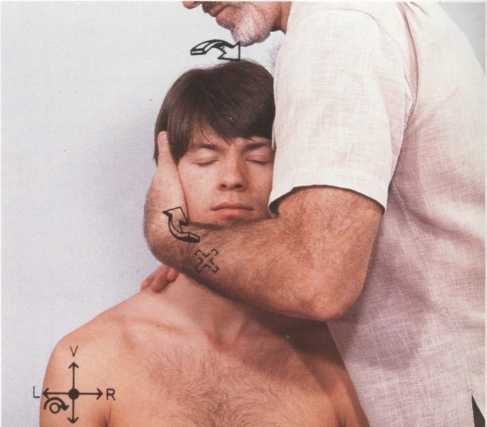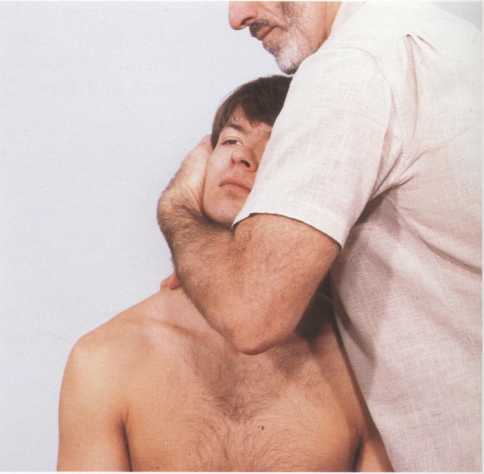70 (226)

3.7.2C. Specific techniąue to łncrease dorsal flexion with rotation to the right and lateral flexion to the left of C2 on C3.
P sitting.
(T “working” specifically on the right side of C2).
Starting Position: P: Sitting; left side of head supported against T’s left shoulder and chest. T: Standing facing P’s left side.
Grip: T’s left hand grips the right side of P’s occiput, stabilizing P’s head against Ts chest and shoulder. T’s left little finger lies along the spinous and right articular processes of P’s axis (C2), parallel to the articular facets between C2 and C3. To prevent C3 from rotating to the right, T’s right index finger stabilizes the right inferior articular process of C3 from the dorsal aspect (so that it does not hinder the dorsal glide of the right C2 facet). For the same reason, T’s right thumb stabilizes the left side of the spinous process of C3, thus also preventing it from rotating to the right.
Procedurę: Using this grip, T applies traction, and then maintaining this traction, moves his/her body to gradually but not fully dorsally flex while fully rotating to the right and laterally flexing C2 on C3 to the left. T’s left little finger, “working” on the right side of C2, pushes the right articular process of C2 slightly dorsally.
Stimulation of Antagonists: T retains grip, and asks P to look upwards, to the right, and rearwards, and then move his/her head further in the direction just stretched. T resists that move-ment to stimulate P’s antagonists.
Notes: When moving the right articular facet of C2 slightly dorsally, the left articular facet moves slightly ventrally.
When the cervical spine is dorsally flexed, rotated to the right and laterally flexed to the left, locking results. Therefore, T must be able to interpret the various types of end feel, see section 1.6.3, p. 9.
The finał position may move the vertebrae into a locked position.
Therefore, T must cautiously use successively smaller forces and movements in approaching the finał position.



Fig. 54 a. Starting Position.

Fig. 54 b. Finał Position.
70
Wyszukiwarka
Podobne podstrony:
62 (263) 3.6.2C. Specific techniąue to increase dorsal flexion with rotation and lateral flex-ion to
48 (390) 3.5.2C. Specific technique to increase dorsal flexion of the occiput on the atlas. P supine
43 (434) 3.3.2C. Specific technique to increase ven-tral flexion with rotation and Iateral flexion t
33 (623) 3.2.2C. Specific techniąue to increase ven-tral flexion of the occiput on the atlas. P supi
58 (289) 3.6.1A. Non-specific techniąue to increase dorsal flexion with rotation and later-al flexio
60 (278) 3.6.2A. Specific technique to increase dorsal flexion with rotation and lateral flex-ion to
61 (265) 3.6.2B. Specific techniąue to increase dorsal flexion with rotation and lateral flex-ion to
63 (253) 3.6.2D. Specific technique to increase dorsal flexion with rotation and lateral flex-ion to
64 (250) 3.7.1A. Non-specific technique to increase dorsal flexion with rotation to the right a
65 (245) 3.7.IB. Non-specific techniąue to increase dorsal flexion with rotation to the right a
66 (237) 3.7.1C. Non-specific techniąue to increase dorsal flexion with rotation to the right a
67 (234) 3.7.2A1. Specific technique to increase dorsal flexion with rotation to the right and
68 (230) 3.7.2A2. Specific techniąue to increase dorsal flexion with rotation to the right and
69 (224) 3.7.2B. Specific techniąue to increase dorsal flexion with rotation to the right and l
71 (223) 3.7.2D. Specific techniąue to increase dorsal flexion with rotation to the right and l
45 (421) 3.5.1. Non-specific techniąue to increase dorsal flexion. P supine. Starting Position: P: S
46 (412) 3.5.2A. Specific technique to increase dorsal flexion of the occiput on the atlas. P sittin
47 (396) 3.5.2B. Specific techniąue to increase dorsal flexion of the occiput on the atlas. P sittin
49 (372) 3.5.3A. Specific techniąue to increase dorsal flexion of the atlas on the axis. P. sitting.
więcej podobnych podstron